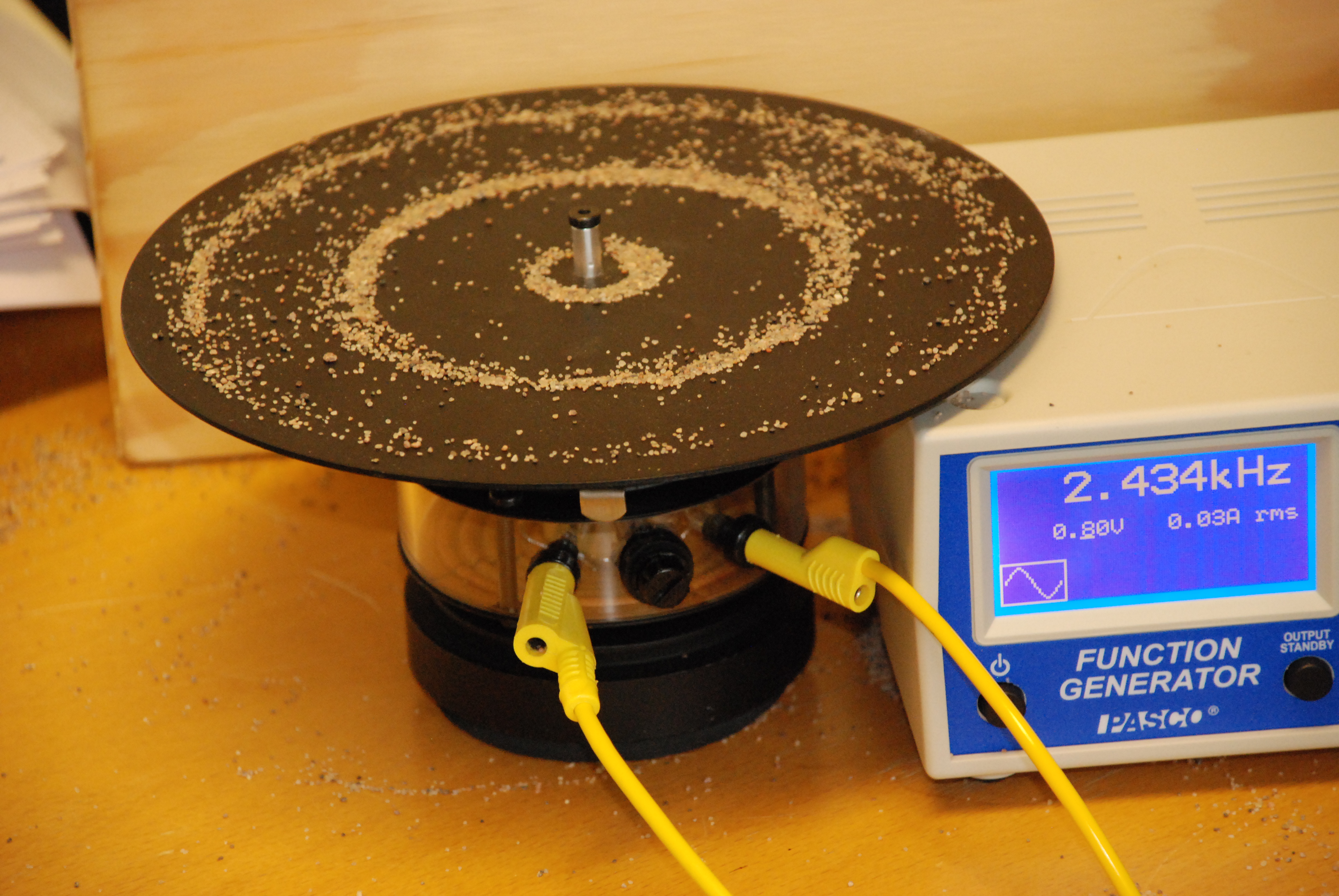Here you can share your data and analyze them. What is the connection between wavelength and frequency? What is the theory behind the frequencies of the different modes of this square plate?
We studied the circular plate at different frequencies. By adding sand on the disc we could see when we had resonance because then the sand gathered at the nodes. (Resonace occurs when the applied frequency correspond to the natural frequency of the plate). Different frequencies produced different patterns at the disc, like circles of different sizes and. sometimes we get one circle and sometimes more than one. This is because the wavelength of the wave depends on the wave speed and frequency of signal.
/Sara
Anyone know how to uppload a picture? Anyways we go a couple of different patterns when we did the “sandtest” on the round plate. Mostly circles that varied in size and numbers, but allso paterns like four leaf clover(here a picture would be good but I didn’t manage to upload one). The sand formed along the modes when we applied a frequency that corresponded to the plates natural frequencies because that’s when resonance occurs. /lucas
- The wavelength depends on the velocity and the frequency of the wave such that wavelength=velocity/frequency.
- When you choose a frequency that generates resonance the sand will move to the places where there’s nodes. This happens due to the fact that there’s no movement at the nodes.
- Most of the times on the square plate there were nodes on both the x- and y-axis. At some times, for to me unknown reasons, we only got nodes on one axis.
- I’ll write some more when I have some pictures to upload.
/Martin
As we changed the frequency it became clear that the sand formed into specifik chapes for specific frequencies. Although this didnt occure on every frequency. It only occured when the circulare plate were able to move in the exakt same frequency, this is called resonance and can only occure at the same frequency as the plates natural frequency. The sand formed different chapes becouse the grains didnt move where the waveformes had nodes.
/Filip
I have one of the ipods that we used to take fotos with, but i cant upload them, anyone with apple knowledge/cable that can do me a favour?
/ Haara
I have analyzed sound from one of the soundrecordings, the number 15. I got a plot with three nodes, which I think mean that the sound has three different tones. One fundamental and two overtones (tre toner, en grundton och två övertoner). From the frequenzes i could calculate the wavelenght (wavelenght=velocity/frequenzy, and that confirmed my thoughts about the tones, with a half wavelength= 0,1 m. What I don´t know how to analyze is who to deduce where you stryck the plate. Has someone else any idees?
/Ida
/Augusto (I wrote a bit of the relation at quantum level)
In the resonance experiment, as the pitch of the tone increases, geometric patterns form and become complex. This resembles the orbital shapes of the electrons in an atom, which at higher energy levels (frequency) change “shape”.
In a round plate, the nodes are similar to those of an electron, with round patterns, such as simple circles, clovers, or coupled ovals, although the patterns will differ in shape depending not only on the frequency of vibration, but also in the geometry of the plate and the excitation point.
The patterns only form at certain frequencies, just as the energy levels of an atom are quantised by their frequency or energy level. It is also good to notice that the pattern does not change according to the intensity of the tone, increasing the voltage simply makes the pattern easier to form in a clear form; just as at the quantum level the orbitals don’t depend on the intensity but on the frequency with which you excite the atom, as demonstrated with the photoelectric effect.

